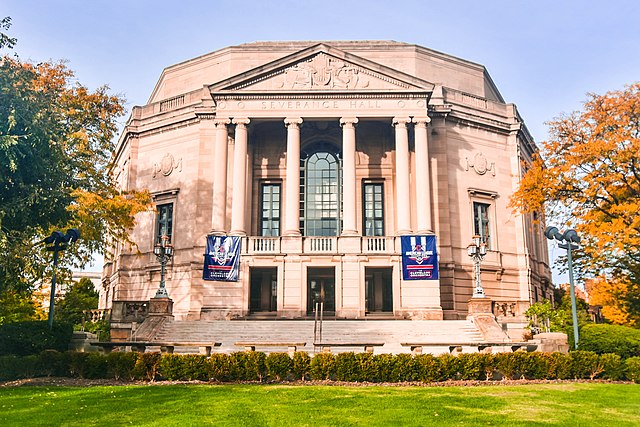Cleveland Museum of Natural History
The Cleveland Museum of Natural History is a natural history museum located approximately five miles (8 km) east of downtown Cleveland, Ohio in University Circle, a 550-acre concentration of educational, cultural and medical institutions. The museum was established in 1920 by Cyrus S. Eaton to perform research, education and development of collections in the fields of anthropology, archaeology, astronomy, botany, geology, paleontology, wildlife biology, and zoology. The museum traces its roots to the Ark, formed in 1836 on Cleveland's Public Square by William Case, the Academy of Natural Science formed by William Case and Jared Potter Kirtland, and the Kirtland Society of Natural History, founded in 1869 and reinvigorated in 1922 by the trustees of the Cleveland Museum of Natural History.
Cleveland Museum of Natural History
The museum's cast of Lucy
A statue of Carl Linnaeus by Carl Eldh stands outside the museum.
Cleveland, officially the City of Cleveland, is a city in the U.S. state of Ohio and the county seat of Cuyahoga County. Located in Northeast Ohio along the southern shore of Lake Erie, it is situated across the U.S. maritime border with Canada and lies approximately 60 miles (97 km) west of Pennsylvania. Cleveland ranks as the most populous city on Lake Erie, the second-most populous city in Ohio, and the 54th-most populous city in the U.S. with a 2020 population of 372,624. The city anchors the Cleveland metropolitan area, the 33rd-largest in the U.S. at 2.18 million residents, as well as the larger Cleveland–Akron–Canton combined statistical area, the most populous in Ohio and the 17th-largest in the country with a population of 3.63 million in 2020.
Image: Cleveland Playhouse Square (13917560487)
Image: Art museum and lagoon
Image: Severance Hall (30706862372)
Image: Rock and roll hall of fame sunset







